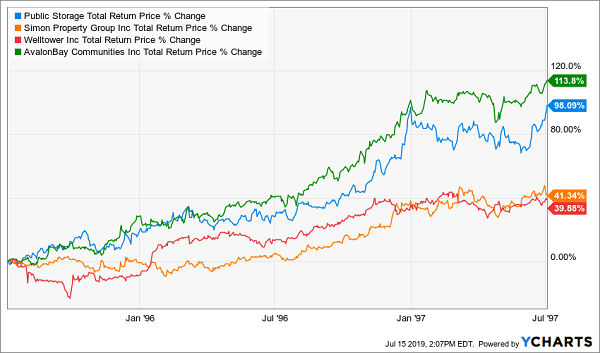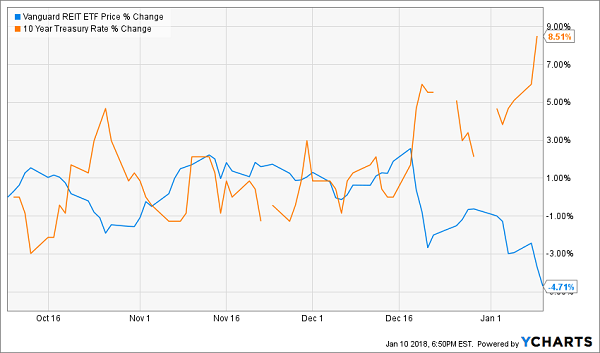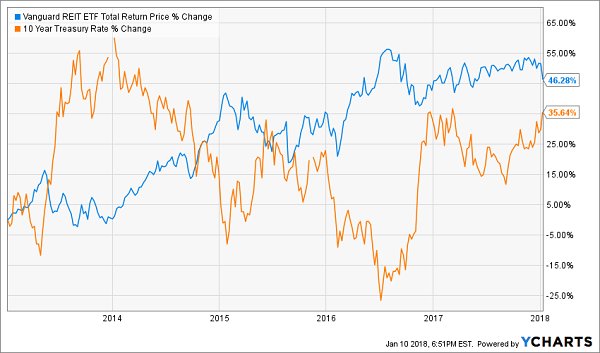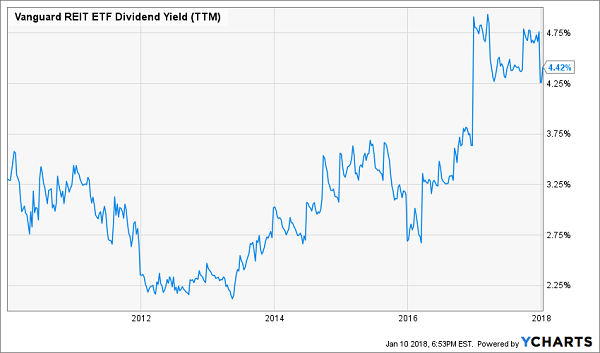Last time we had a July like this, REITs (real estate investment trusts) ran wild. The top plays delivered dividends plus price gains between 40% and 114%!
REIT Rhyme for 114% Returns?
Tell me if this sounds familiar:
- It was July,
- The stock market was hitting all-time highs,
- And the Fed was about to cut rates for the first time in a while.
We shall see if July 2019 continues to “rhyme” with July 1995. Back then, we had Fed Chair Alan Greenspan introduce the concept of the “Greenspan Put,” the inside joke that the Maestro would save any decline in stocks with rate cuts.… Read more






Recent Comments